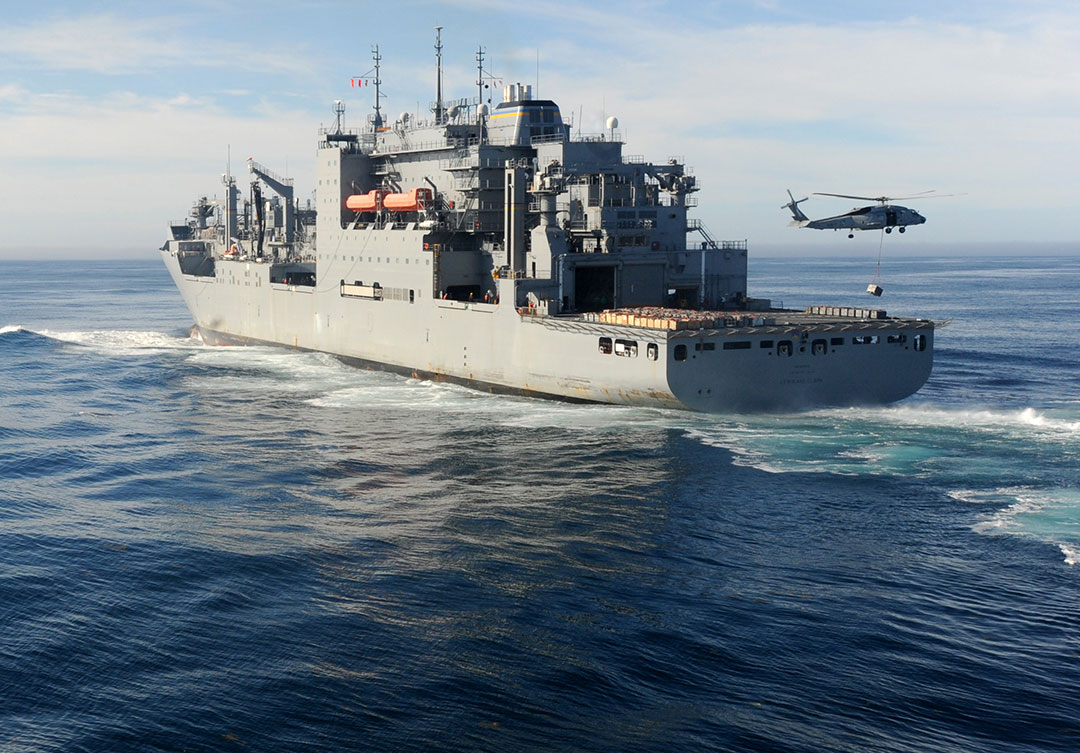
money and time for people with military experience to transition into the merchant marine. Congress recently approved changes aimed at streamlining
that process.
It seems only logical that retiring military personnel who want to continue seagoing careers should be able to transition smoothly to the commercial shipping industry. But the process of transitioning skills and sea time has been a difficult one, burdened by red tape, expense and a long and winding credentialing process.
An amendment to the U.S. Coast Guard Authorization Act, included in omnibus legislation passed by Congress late last year, could streamline the process for military veterans pursuing a maritime career.
The Military to Mariner Act updates the merchant mariner credentialing system, streamlining regulations, reducing paperwork and reducing burdens on military veterans who want to continue their seagoing careers. It requires the Coast Guard to move the application process online within two years and to take a higher percentage of military sea service time into account for credentialing purposes.
The current Military to Mariner program, created in the 1990s to provide veterans a fast-track to the U.S. merchant marine, is little known among active-duty military, according to Mark Buzby, retired U.S. Navy rear admiral and former U.S. maritime administrator. Because people don’t learn about the program until late in their military careers, they find their skills don’t apply to cargo operations, Buzby said, and they can be deterred from pursuing an expensive and time-consuming credentialing process.
An executive order signed by then-President Donald Trump in 2019 required the U.S. Defense and Homeland Security departments to work together to smooth the process.
“That was positive, but it is still a hard process,” Buzby said. “Those who want to pursue it find they won’t be able to transition directly to a job in the merchant marine. It takes about a year to get credentials in most cases and a lot of coin out of your pocket. It can take about 750 to 1,200 hours, and it is easy to run up a $4,000 to $5,000 tab even with maritime experience, because there is quite a bit of difference between naval service and commercial service.”
Currently, military personnel learn about the program primarily by word of mouth, Buzby said. The Navy Cool and MilGears websites help automate the application process, however the U.S. Navy does not widely promote the program, Buzby said.
“Why give people all the info they need to leave the Navy when they are trying to retain them?” he said, citing the different tack taken by the British Royal Navy, which informs seamen at the beginning of military service about the skills they would need to continue to work in maritime careers.
Commander Jennifer Wescott, manager of the Coast Guard Military to Mariner program, agrees the credentialing process is not as well-known as it could be.
“For a lot of folks, they don’t realize there are specific timelines required by law,” she said. Active-duty military members have a window of seven years to complete the credentialing process, but veterans have a three-year period.
“If they don’t catch it quite right, it can cause a little bit of a delay or a hurdle for them to clear,” she said. Wescott has seen an improvement in recent years in educating service people who would be interested in merchant marine in how to document their sea time and skills or request training earlier.
“The more a person knows, the more they can do for themselves before they transition out of service,” she said.
Wescott declined to comment on the new requirements, but said her program is always working on ways to improve access to the workforce.
“Right now, it includes active duty and reservists, and we are working on plans and leveraging relationships to work with people outside the Coast Guard to present ideas to remove hurdles when we can,” she said. “We work with Veterans Affairs to see how to partner with them for members who don’t have access to what we have for our active duty and military reserve members.
Wescott’s office has seen a rise in applications for members pursuing credentials over the past several years, primarily due to a program that reimburses some of the costs associated with the credentialing process, such as the application fee and the TWIC, the Transportation Worker Identification Credential.
“We have seen significant growth in that new facet of the program,” she said. “We offer every member $4,500 of credentialing assistance every fiscal year toward credentialing.”
Streamlining the credentialing process may not be enough to stem a shortage of maritime workers, Buzby said. At present, the U.S. is short some 1,800 active mariners, particularly those eligible to sail deep-sea assignments. Long assignments away from home and family can make maritime careers a tough sell.
“Going to sea for a career is a tough life, and it is especially difficult if you have a family. If you did it for the first part of your career, it’s tough to sell more of that, even if you’re dangling a bigger paycheck in front of them,” Buzby said. “These people already know what it is like to live this kind of lifestyle and have to be willing to sign up for more of it.” •

